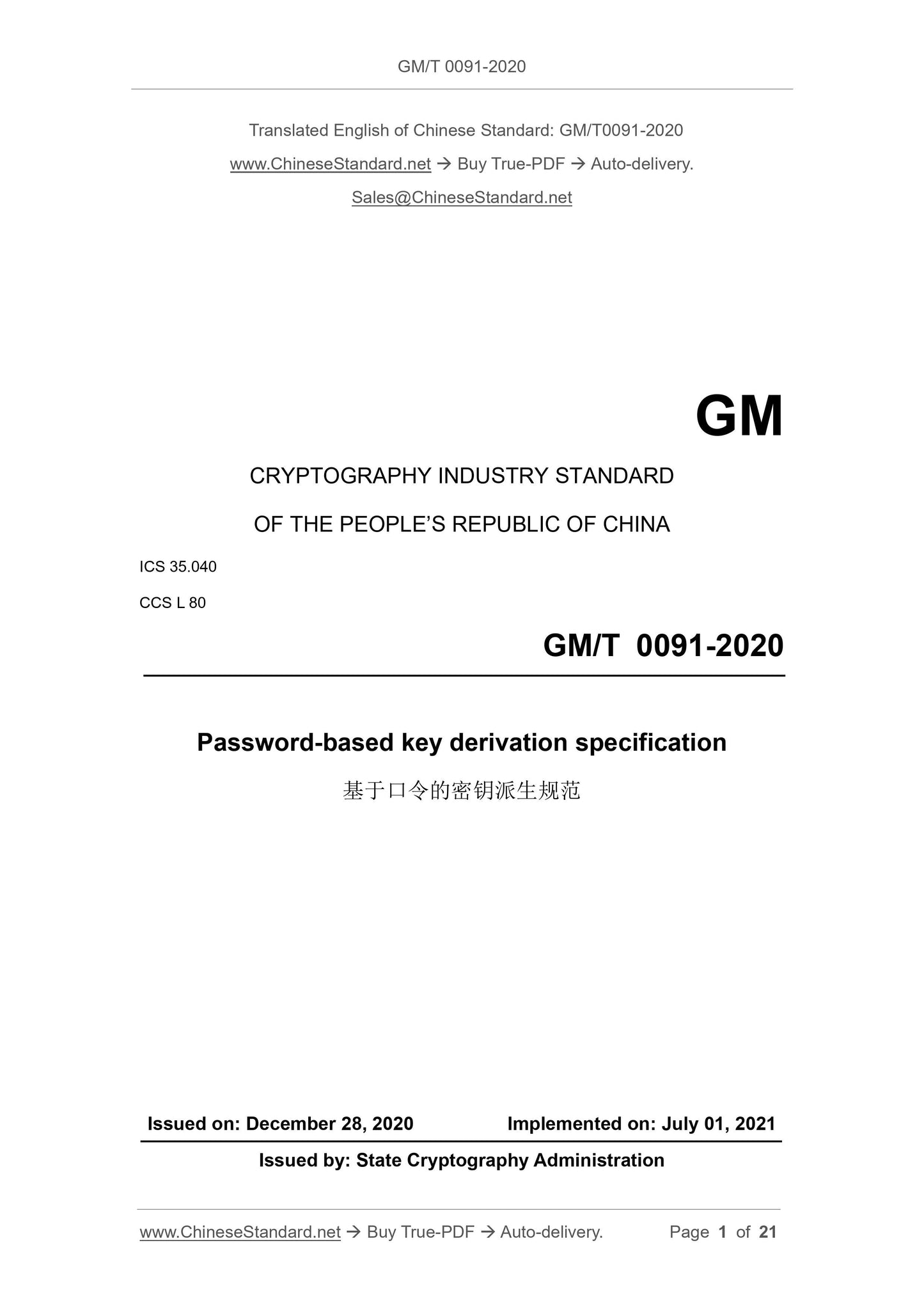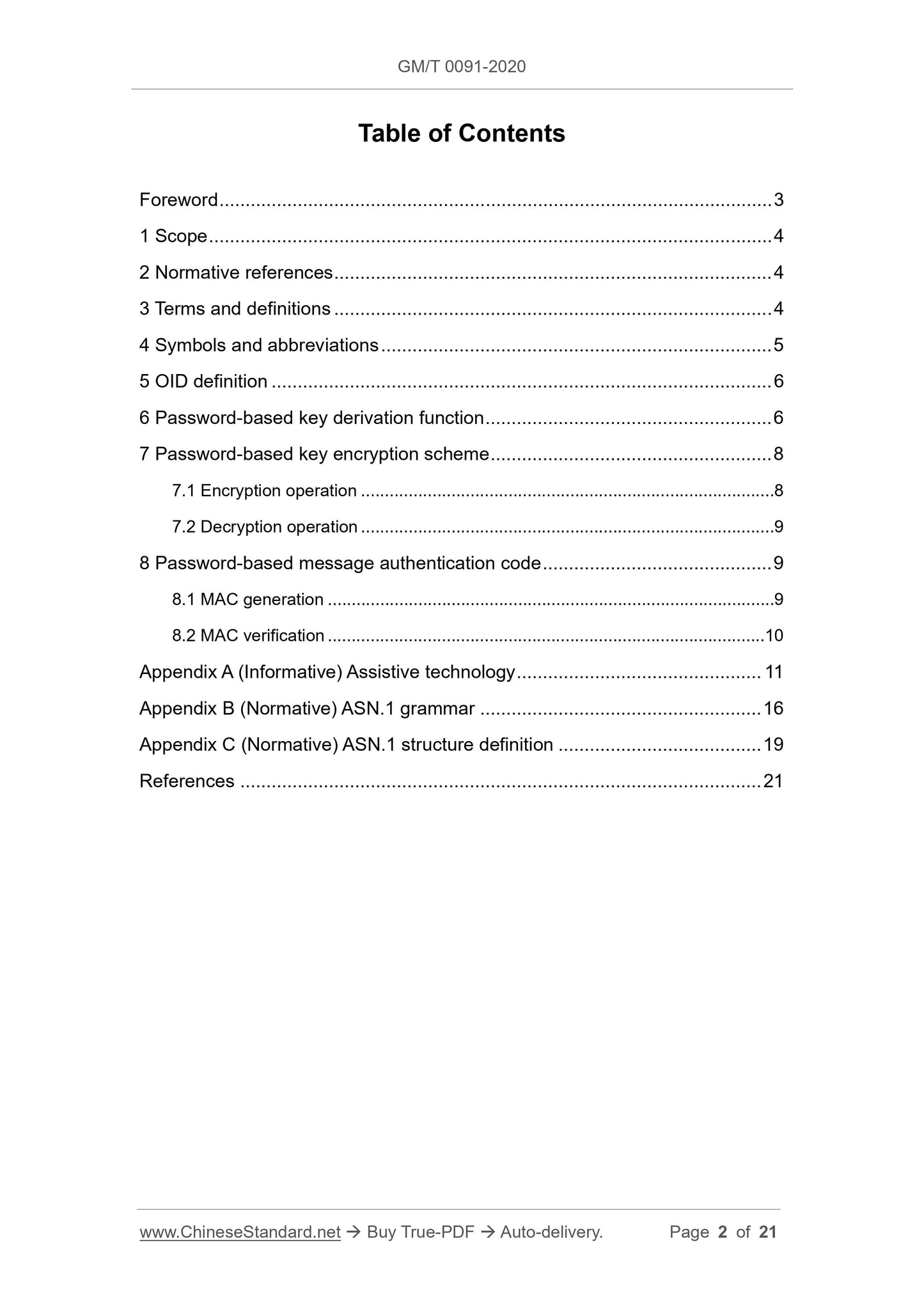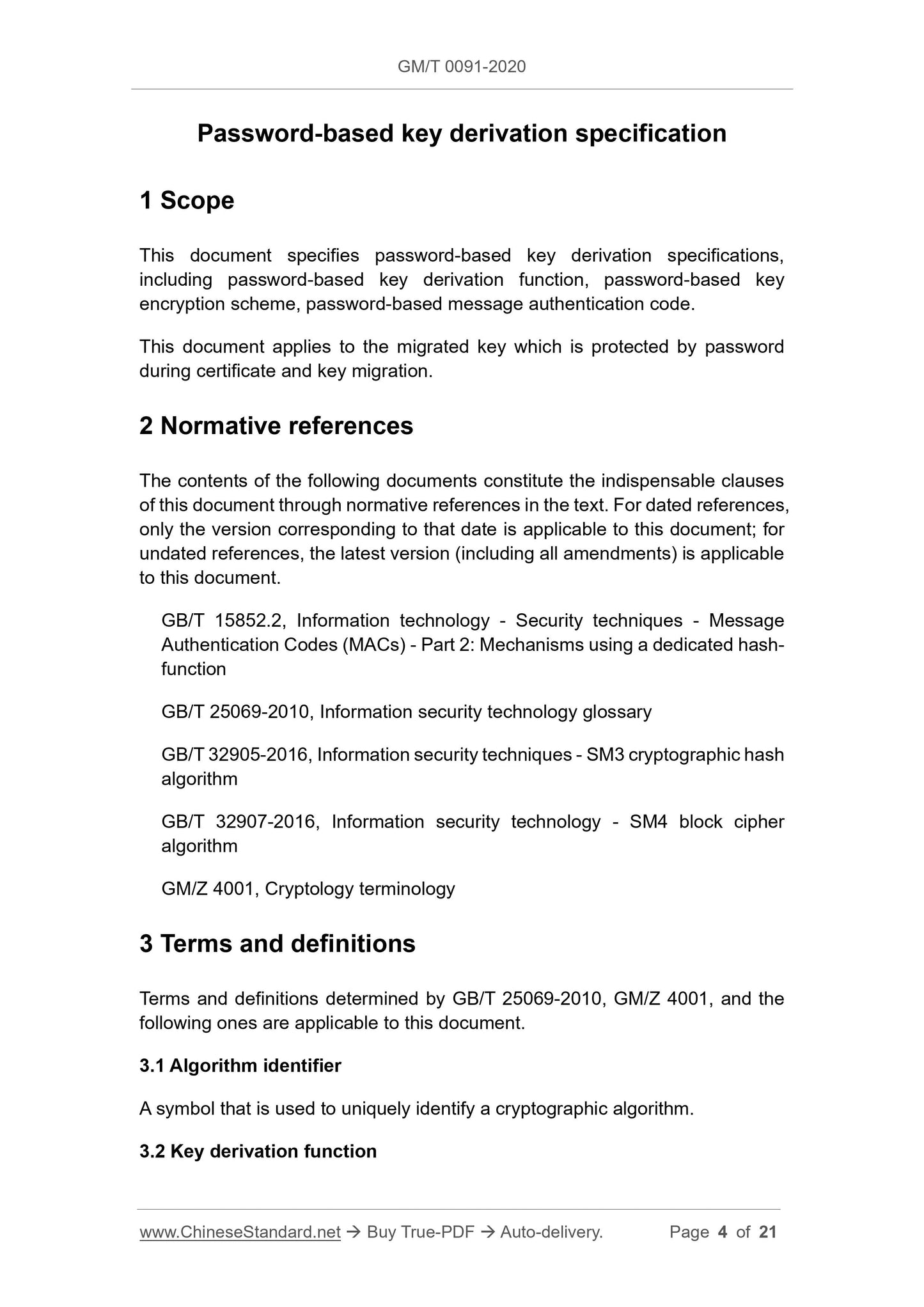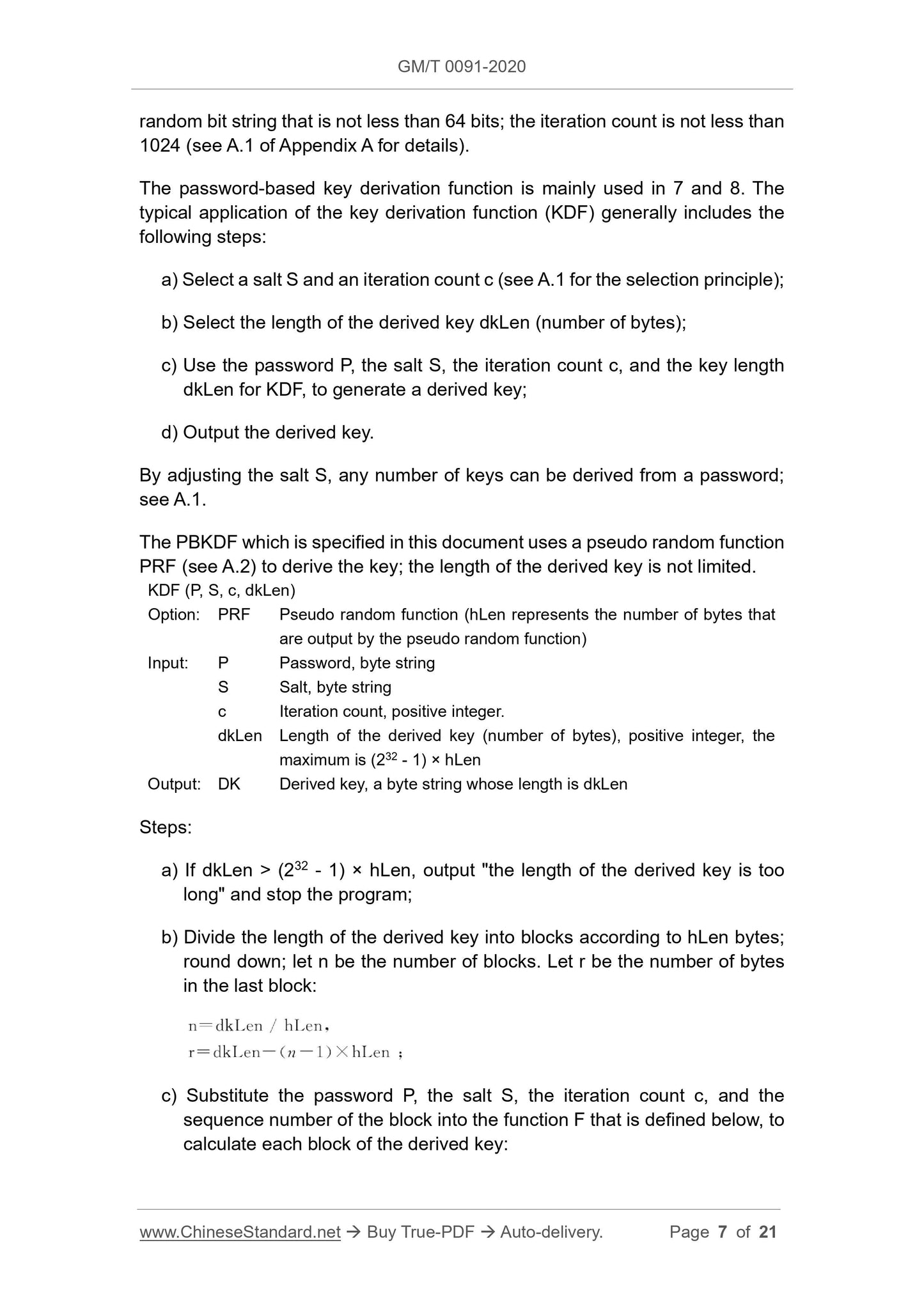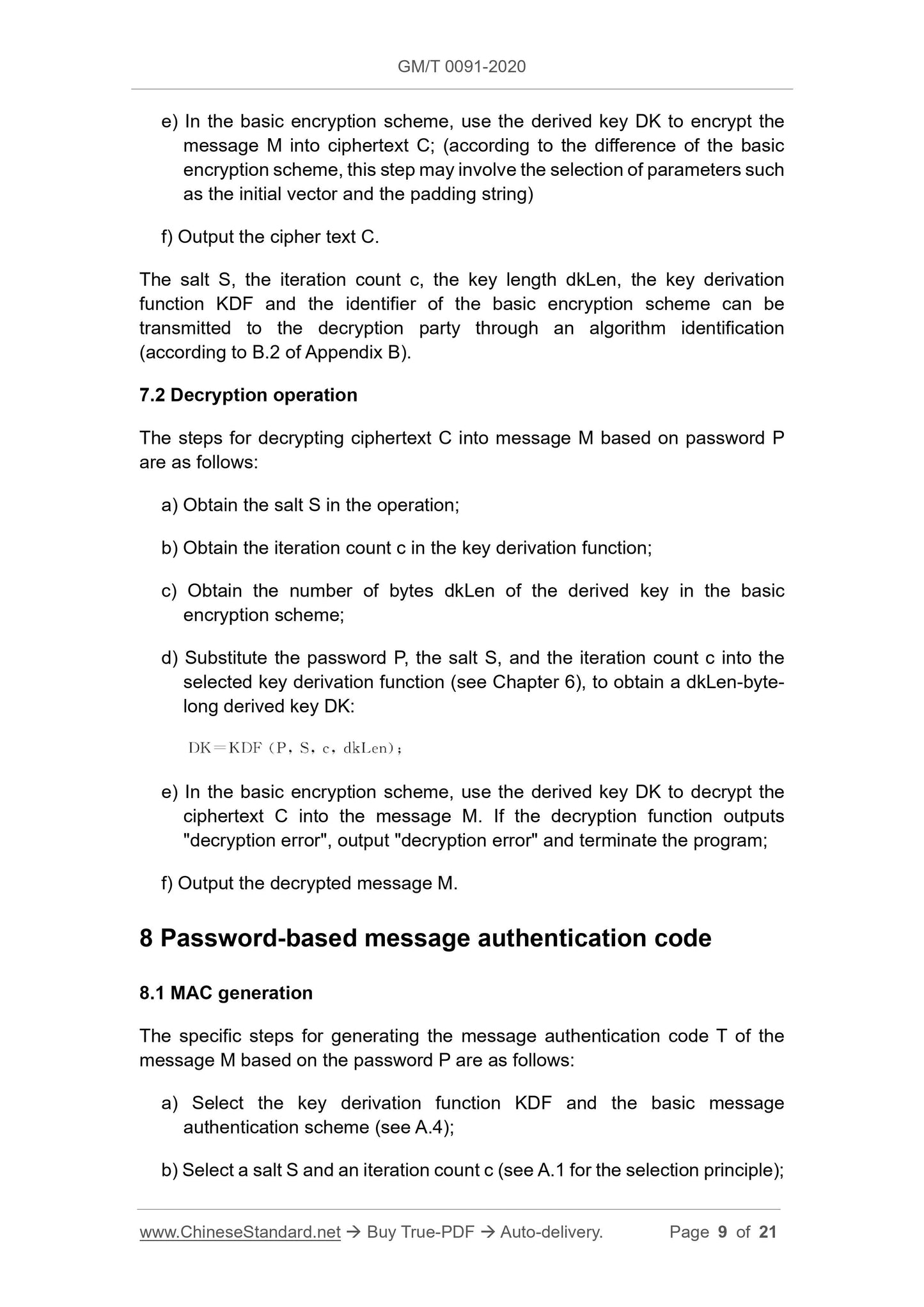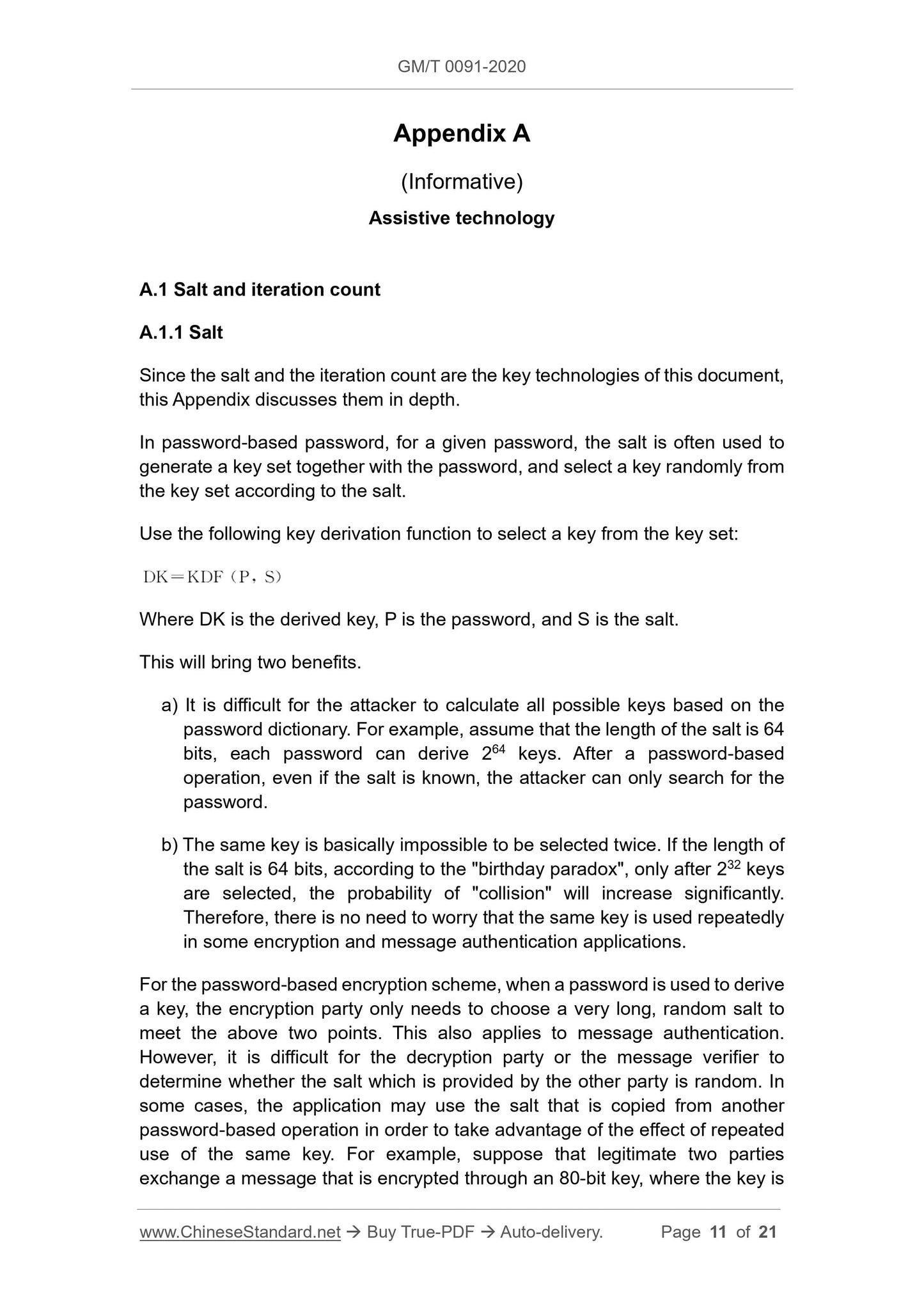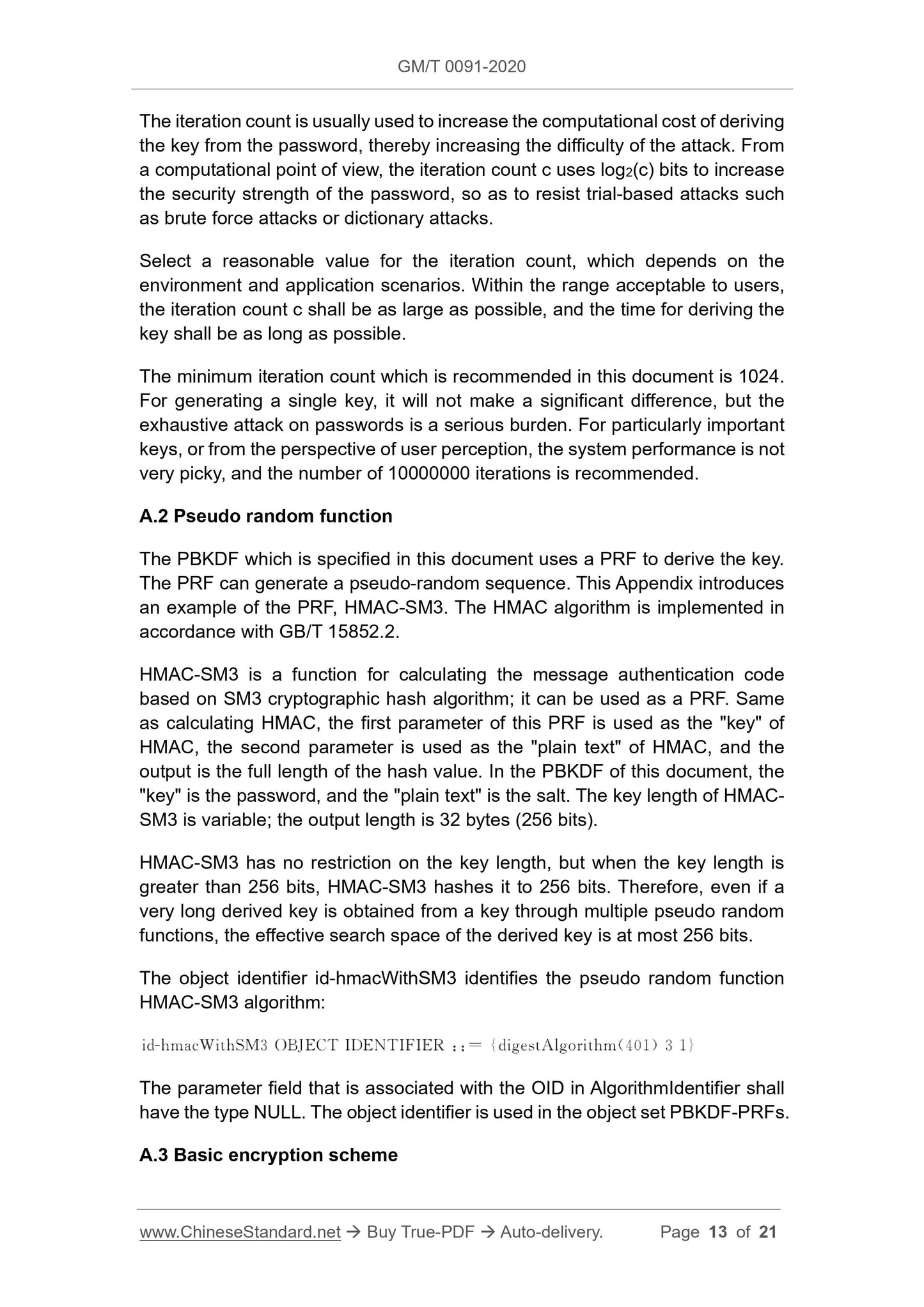1
/
of
7
www.ChineseStandard.us -- Field Test Asia Pte. Ltd.
GM/T 0091-2020 English PDF (GM/T0091-2020)
GM/T 0091-2020 English PDF (GM/T0091-2020)
Regular price
$260.00
Regular price
Sale price
$260.00
Unit price
/
per
Shipping calculated at checkout.
Couldn't load pickup availability
GM/T 0091-2020: Password-based key derivation specification
Delivery: 9 seconds. Download (and Email) true-PDF + Invoice.Get Quotation: Click GM/T 0091-2020 (Self-service in 1-minute)
Newer / historical versions: GM/T 0091-2020
Preview True-PDF
Scope
This document specifies password-based key derivation specifications,including password-based key derivation function, password-based key
encryption scheme, password-based message authentication code.
This document applies to the migrated key which is protected by password
during certificate and key migration.
Basic Data
| Standard ID | GM/T 0091-2020 (GM/T0091-2020) |
| Description (Translated English) | Password-based key derivation specification |
| Sector / Industry | Chinese Industry Standard (Recommended) |
| Classification of Chinese Standard | L80 |
| Word Count Estimation | 17,158 |
| Date of Issue | 2020-12-28 |
| Date of Implementation | 2021-07-01 |
| Regulation (derived from) | National Cryptography Administration Announcement No. 41 |
| Issuing agency(ies) | State Administration of Cryptography |
Share
